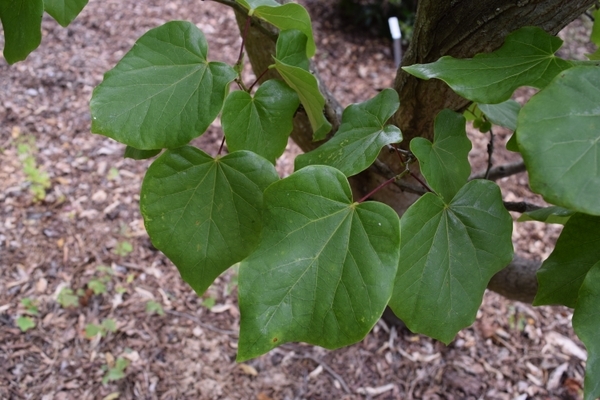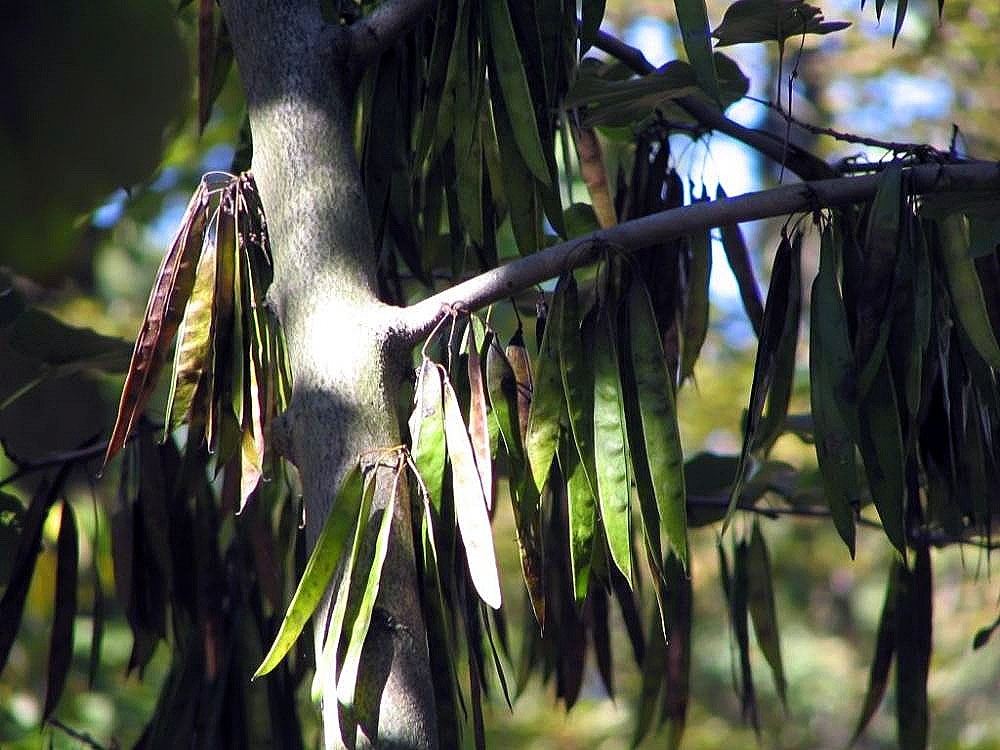Cercis gigantea
Common Name(s):
- Phonetic Spelling
- SER-sis jy-GAN-tee-uh
- Description
-
This species is not widely available nor is it recommended for NC gardens. Please consider planting Cercis canadensis and its cultivars.
The Giant Redbud's foliage is just as the name suggests. Ranging from 6 to 8 inches long, the leaves are the largest in the genus. The genus name Cercis comes from the Greek word kerkis which means weaver's shuttle, referring to the fact that the seed pod resembles the size and shape of a weaver's shuttle used to move thread back and forth on a loom. The bark of young shoots are used in basket making.
It will perform at its best when grown in soils that are considered calcareous, that is containing calcium carbonate and being of a chalky consistency.
Minimal information is available about this plant, however, is most closely related to Cercis chinensis. Giant Redbud is distinguished by its much larger leaves and more rapid growth rate. Seed received from the Shanghai Botanic Garden was propagated and was formerly found in the gardens at the JC Raulston Arboretum at North Carolina State University. That specimen which was removed in 2001, was a valuable source for seed. Propagation of those seeds have led to other specimens, one of which is at the US National Arboretum.
Insects, Diseases, and Other Plant Problems: This tree can suffer from damage caused by deer. It will not tolerate being restricted by paving.
- See this plant in the following landscape:
- Cultivars / Varieties:
-
- Tags:








- Cultivars / Varieties:
-
- Tags:
-
-
Attributes:
- Genus:
- Cercis
- Species:
- gigantea
- Family:
- Fabaceae
- Life Cycle:
- Woody
- Recommended Propagation Strategy:
- Layering
- Seed
- Stem Cutting
- Country Or Region Of Origin:
- China
- Wildlife Value:
- Butterflies are attracted to the flowers.
- Play Value:
- Attractive Flowers
- Attracts Pollinators
- Buffer
- Colorful
- Screening
- Shade
- Wildlife Food Source
-
-
Whole Plant Traits:
- Plant Type:
- Tree
- Woody Plant Leaf Characteristics:
- Deciduous
- Habit/Form:
- Arching
- Rounded
- Growth Rate:
- Rapid
- Maintenance:
- Low
- Texture:
- Medium
-
-
Cultural Conditions:
- Light:
- Full sun (6 or more hours of direct sunlight a day)
- Partial Shade (Direct sunlight only part of the day, 2-6 hours)
- Soil Texture:
- Loam (Silt)
- Soil pH:
- Acid (<6.0)
- Neutral (6.0-8.0)
- Soil Drainage:
- Good Drainage
- Moist
- Available Space To Plant:
- 6-feet-12 feet
- 12-24 feet
- NC Region:
- Coastal
- Piedmont
- USDA Plant Hardiness Zone:
- 7a, 7b, 8a, 8b, 9a, 9b
-
-
Fruit:
- Fruit Color:
- Brown/Copper
- Fruit Value To Gardener:
- Showy
- Display/Harvest Time:
- Fall
- Fruit Type:
- Legume
- Fruit Description:
- The fruits consist of flattened brown legumes.
-
-
Flowers:
- Flower Color:
- Pink
- Purple/Lavender
- Flower Value To Gardener:
- Showy
- Flower Bloom Time:
- Spring
- Flower Size:
- < 1 inch
- Flower Description:
- The flowers are a pinkish/purple and bloom in the early spring.
-
-
Leaves:
- Woody Plant Leaf Characteristics:
- Deciduous
- Leaf Color:
- Green
- Leaf Feel:
- Glossy
- Leathery
- Leaf Value To Gardener:
- Showy
- Deciduous Leaf Fall Color:
- Gold/Yellow
- Leaf Type:
- Simple
- Leaf Arrangement:
- Alternate
- Leaf Shape:
- Cordate
- Hairs Present:
- No
- Leaf Length:
- > 6 inches
- Leaf Width:
- > 6 inches
- Leaf Description:
- The thick, leathery, dark green leaves are 6-8 inches long, alternate, simple, and glossy.
-
-
Bark:
- Bark Color:
- Dark Gray
- Light Gray
-
-
Stem:
- Stem Color:
- Brown/Copper
- Gray/Silver
- Stem Is Aromatic:
- No
- Stem Description:
- Often forms as a multi-stemmed tree. The first year branches will be dark brown.
-
-
Landscape:
- Landscape Location:
- Woodland
- Landscape Theme:
- Butterfly Garden
- Pollinator Garden
- Design Feature:
- Accent
- Barrier
- Flowering Tree
- Shade Tree
- Specimen
- Attracts:
- Pollinators
- Songbirds
- Specialized Bees
- Resistance To Challenges:
- Deer






